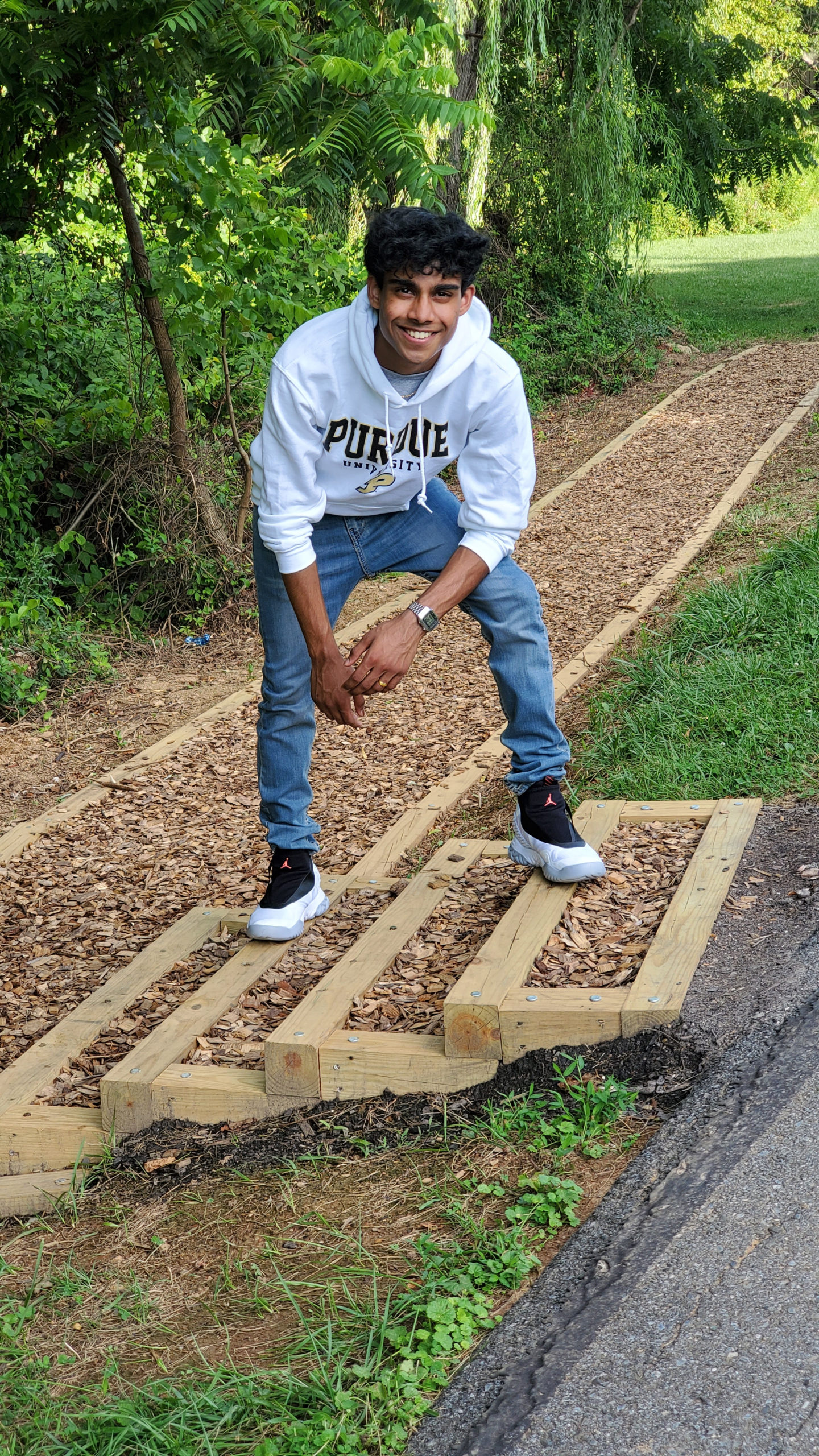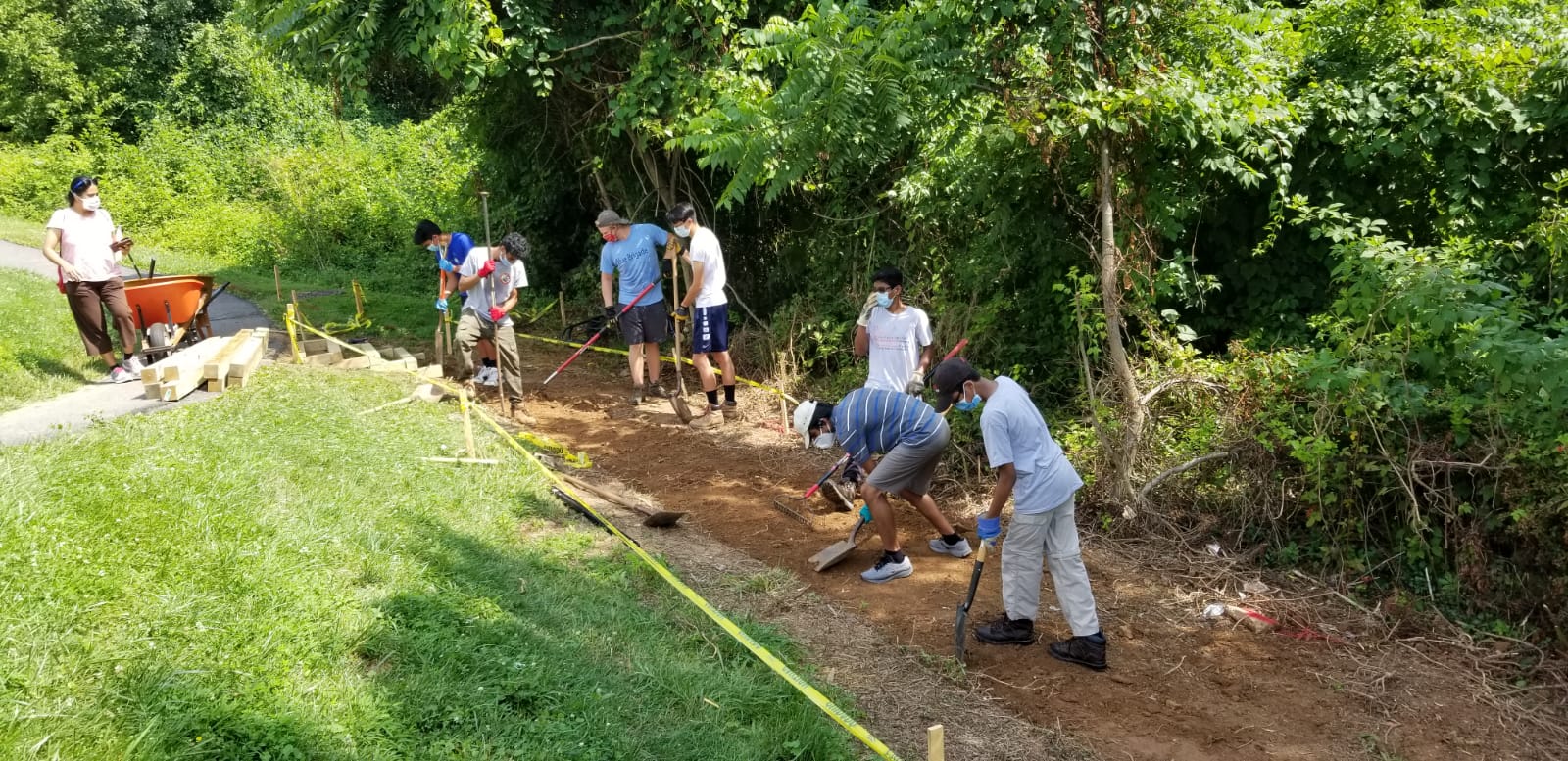 As someone who has always had a soft spot for community service and a passion for engineering, I felt that my Eagle Project was a perfect opportunity for me to make a meaningful impact in my community while also developing personal skills and knowledge. For my project, I built a new path alongside a hill in my community, but it involves the risk of skidding and falling down the hill into shrubs while walking tangent to such a steep slope. My goal was to fix this issue and create a more convenient and safer path for everyone.
As someone who has always had a soft spot for community service and a passion for engineering, I felt that my Eagle Project was a perfect opportunity for me to make a meaningful impact in my community while also developing personal skills and knowledge. For my project, I built a new path alongside a hill in my community, but it involves the risk of skidding and falling down the hill into shrubs while walking tangent to such a steep slope. My goal was to fix this issue and create a more convenient and safer path for everyone.
After I had submitted my proposal and done all the necessary planning, when I was about to begin my project, the COVID-19 pandemic began. For months, BSA had also shut down, and I had little to no communication with anyone who knew what I should do. Because of COVID-19, my project was already on a limited schedule. Moreover, the pandemic forced many lumber mills to shut down, thus creating a shortage in the availability of wood and rental trucks in all local stores such as Home Depot and Lowes.
Ultimately, I had to drive half an hour to Aspen Hill to rent out a truck and drive that truck for an hour to Chantilly, Virginia – the nearest place where I found a store that had the wood I needed in stock. The wood was being sold out so quickly that I became worried if it would still be in stock when I reached the store after the long commute. Furthermore, it was also tough to find wood chips. Local retailers either sold them in small bags or in mass quantities, which were too much for what I needed. Other companies didn’t offer shipping, and even those that did only would deliver in dump trucks instead of prepackaged bags, as I preferred.
But once I had received the wood chips, the project was back on track. Although we still had to be careful while doing this project due to COVID-19 and the summer heat. Since the nearest parking lot from the worksite was atop a steep hill, it was too strenuous and dangerous to transport all the wood chips from the place where the wood chips were dumped down the hill to the worksite. On top of this, there was a 107-degree heat index reading, which put everyone at risk for heat strokes and dehydration. Frequent breaks were necessary as everyone was exhausted and out of breath since breathing was limited through masks, and shade was scarce. This limited the amount of work that could be accomplished per day, and the project was ultimately extended into a third day. Lastly, the inherent risk of COVID-19 was another major issue related to the project, and several precautions were put in place to mitigate this.
Apart from these major issues, I also had some technical issues regarding the project. I had to make sure that the rebars and spikes I hammer into the ground don’t hit the utility lines directly underneath. Hammering in rebars was also incredibly difficult. Due to the rocky soil, the rebars would sometimes hit a stone a foot underground and not go down any further. This made it very hard, and time-consuming to get rebars into the ground and ultimately led to last-minute shopping runs to buy smaller sized rebars and spikes, costing us more time. Despite all of that, we finished the project. The primary process of the project started with clearing out shrubs. Then we dug out part of the hill to make stairs, leveled the area at the foot of the hill to create a path, and edged the path and stairs with woodblocks. Finally, we laid weed blocking fabric, connecting the stairs to the path, nailed down the wood with spikes (while making sure the spikes don’t hit any utility lines), and finally covered the path in wood chips.
 My favorite part of this project is that it is related to my passion for engineering. I learned so much about leading a team under pressure and gaining experience designing and executing engineering plans. It was also humbling to see so many volunteers willing to donate tools or come and help out. Companies like Ace Hardware, which donated tools for my project, Mainscapes, donated, and delivered all the woodchips I needed. Many of my friends who volunteered in the project (some of whom were not even Boy Scouts themselves) were essential to my project’s success. Moreover, one of the workdays was during my 18th birthday, and it was very satisfying to spend the day that marked my adulthood, giving back to my community that made me who I am. This project taught me a lot about planning, delegating duties to people based on their strengths, learning to accept the unexpected, and understanding that you can’t be prepared for everything; impulse decisions under pressure will always be needed. I also learned to think and work like an engineer, worry about how the structure will hold up in various weather conditions, react to wear and tear, and understand the importance of adhering to all safety regulations for any construction.
My favorite part of this project is that it is related to my passion for engineering. I learned so much about leading a team under pressure and gaining experience designing and executing engineering plans. It was also humbling to see so many volunteers willing to donate tools or come and help out. Companies like Ace Hardware, which donated tools for my project, Mainscapes, donated, and delivered all the woodchips I needed. Many of my friends who volunteered in the project (some of whom were not even Boy Scouts themselves) were essential to my project’s success. Moreover, one of the workdays was during my 18th birthday, and it was very satisfying to spend the day that marked my adulthood, giving back to my community that made me who I am. This project taught me a lot about planning, delegating duties to people based on their strengths, learning to accept the unexpected, and understanding that you can’t be prepared for everything; impulse decisions under pressure will always be needed. I also learned to think and work like an engineer, worry about how the structure will hold up in various weather conditions, react to wear and tear, and understand the importance of adhering to all safety regulations for any construction.

